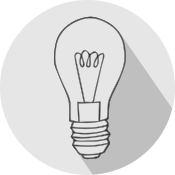Scholar
Definition
As Scholars, physicians demonstrate a lifelong commitment to excellence in practice through continuous learning and by teaching others, evaluating evidence, and contributing to scholarship.
Description
Physicians acquire scholarly abilities to enhance practice and advance health care. Physicians pursue excellence by continually evaluating the processes and outcomes of their daily work, sharing and comparing their work with that of others, and actively seeking feedback in the interest of quality and patient safety. Using multiple ways of learning, they strive to meet the needs of individual patients and their families* and of the health care system.
Physicians strive to master their domains of expertise and to share their knowledge. As lifelong learners, they implement a planned approach to learning in order to improve in each CanMEDS Role. They recognize the need to continually learn and to model the practice of lifelong learning for others. As teachers they facilitate, individually and through teams, the education of students and physicians in training, colleagues, co-workers, the public, and others.
Physicians are able to identify pertinent evidence, evaluate it using specific criteria, and apply it in their practice and scholarly activities. Through their engagement in evidence-informed and shared decision-making, they recognize uncertainty in practice and formulate questions to address knowledge gaps. Using skills in navigating information resources, they identify evidence syntheses that are relevant to these questions and arrive at clinical decisions that are informed by evidence while taking patient values and preferences into account.
Finally, physicians’ scholarly abilities allow them to contribute to the application, dissemination, translation, and creation of knowledge and practices applicable to health and health care.
KEY CONCEPTS
Lifelong learning
- Collaborative learning: 1.3
- Communities of practice: 1.3
- Patient safety: 1.3
- Performance assessment: 1.2
- Personal learning plan: 1.1
- Quality improvement: 1.1, 1.2, 1.3
- Reflection on practice: 1.2
- Seeking feedback: 1.2
- Self-improvement: 1.1, 1.2, 1.3
Teacher
- Faculty, rotation, and program evaluation: 2.5, 2.6
- Formal and informal curricula: 2.1
- Hidden curriculum: 2.1
- Learner assessment: 2.5, 2.6
- Learning outcomes: 2.4, 2.5, 2.6
- Mentoring: 2.2, 2.5
- Needs assessment: 2.4
- Optimization of the learning environment: 2.2
- Principles of assessment: 2.6
- Providing feedback: 2.5, 2.6
- Role-modelling: 2.1, 2.5
- Supervision and graded responsibility: 2.3
- Teaching and learning: 2.2, 2.4, 2.5
Evidence-informed decision-making
- Effect size: 3.3, 3.4
- Evidence-based medicine: 3.1, 3.2, 3.3, 3.4
- Evidence synthesis: 3.2, 3.3
- External validity: 3.3
- Generalizability: 3.3
- Information literacy: 3.2
- Internal validity: 3.3
- Knowledge gaps: 3.1
- Knowledge translation: 3.3, 3.4
- Quality-appraised evidence-alerting services: 3.2, 3.4
- Recognizing bias in research: 3.3
- Structured critical appraisal: 3.3
- Uncertainty in practice: 3.1
Research
- Conflict of interest: 4.2, 4.5
- Confidentiality: 4.1, 4.2
- Informed consent: 4.1
- Research: 4.1, 4.2, 4.3, 4.5
- Research ethics: 4.2
- Research methods: 4.4
- Scholarly inquiry: 4.1, 4.2, 4.4, 4.5
- Scholarship: 4.1, 4.2
- Scientific principles: 4.1
Key competencies | Enabling competencies |
|---|---|
| Physicians are able to: | |
|
|
|
|
|
|
|
|
* Throughout the CanMEDS 2015 Framework and Milestones Guide, references to the patient’s family are intended to include all those who are personally significant to the patient and are concerned with his or her care, including, according to the patient’s circumstances, family members, partners, caregivers, legal guardians, and substitute decision-makers.
Tools
Where are these tools from?
Many of the tools were originally developed for the CanMEDS Teaching and Assessment Tools Guide.
The title codes on the tools are maintained to allow quick cross-referencing between the CanMEDS Tools Guide and this online registry (e.g. T1, T2, A1)
The tools are part of the Royal College’s commitment to support the roll-out of CanMEDS 2015.
 Tips on using these Tools
Tips on using these Tools
- Many of the Tools are designed to use as-is (i.e. no further work required)
- Some tools are also available in MSWord format. This allows you to easily manipulate the ‘bones’ of the tool and customize it for your own use
- When reproducing and modifying the tools, please maintain the footer that acknowledges the source
To maximize the utility of these tools, you should:
- Clarify the teaching and assessment goals of your specific context;
- Select the right tools to match the particular needs and goals of your specific context; and
- Combine Roles and tools in an effective and efficient manner
Teaching
- T1. Lecture or Large Group Session: Foundations of the Scholar Role
Download MS Word | Download PDF - T2. Lecture or Large Group Presentation: Teaching the Scholar Role
Download PDf | Download Power Point - T3. Guided Reflection and Discussion: Planning for Learning
Download MS Word | Download PDF - T4. Coaching: Coaching learners to give and receive feedback
Download MS Word | Download PDF - T5. Teaching Scripts: Teaching script sample and template for evidence-informed decision-making (EIDM)
Download MS Word | Download PDF - T6. Case Report: Teaching Report for the Scholar Role
Download MS Word | Download PDF - T7. Guided Reflection: Evidence-informed decision-making in day-to-day practice
Download MS Word | Download PDF - T8. Research Planning: Sample timetable for a two-year study
Download MS Word | Download PDF
Assessment
- A1. Multisource Feedback: Resident as Teacher multisource feedback
Download MS Word | Download PDF - A2. Multisource Feedback: Giving and receiving feedback
Download MS Word | Download PDF - A3. Homework Assignment: Evidence-Informed Decision-Making
Download MS Word | Download PDF - A4. Monitoring Form: Research Project High-Level Checklist
Download MS Word | Download PDF - A5. Monitoring Form: Research Project Meeting Monitoring
Download MS Word | Download PDF